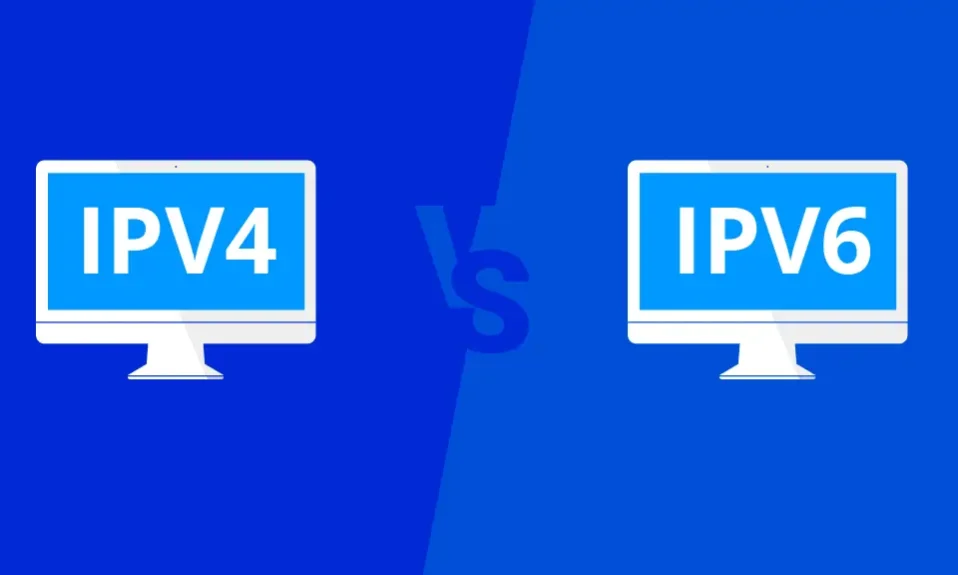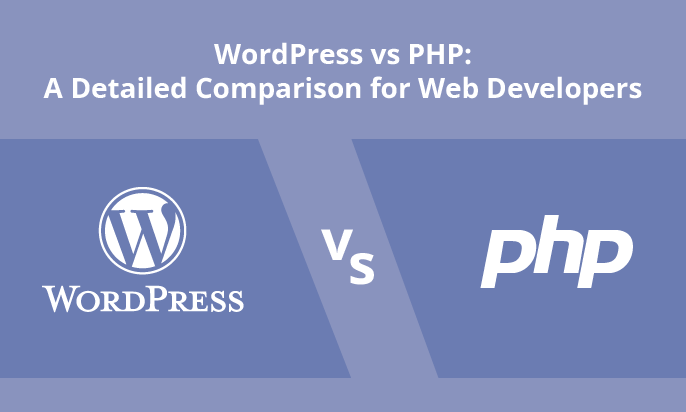In this article, we will delve into the key differences between IPv4 and IPv6, two versions of the Internet Protocol that power our internet connectivity. Understanding the distinctions between these versions is essential as IPv6 gradually replaces IPv4 in order to accommodate the growing number of devices connected to the internet.
Key Takeaways:
- IPv4 and IPv6 are two versions of the Internet Protocol.
- IPv4 uses a 32-bit address system, whereas IPv6 uses a 128-bit address system.
- IPv4 offers approximately 4.3 billion unique addresses, while IPv6 provides an almost unlimited number of addresses.
- IPv6 includes built-in security features, while IPv4 relies on additional protocols for secure communication.
- IPv6 offers improved performance and efficiency compared to IPv4.
What is IPv4?
IPv4, commonly known as Internet Protocol version 4, is the fourth iteration of the Internet Protocol. It uses a 32-bit address system and allows for approximately 4.3 billion unique addresses. However, with the expansion of internet usage, the available IPv4 addresses are depleting rapidly, prompting the need for a new protocol.
What is IPv6?
IPv6, also known as Internet Protocol version 6, is the latest version of the Internet Protocol. It introduces a 128-bit address system, a significant upgrade from the 32-bit address system of IPv4. With IPv6, there is virtually an unlimited number of unique addresses available for devices connecting to the internet.
This expansion in address space is particularly important as we witness the exponential growth of internet-connected devices. IPv6 enables the seamless connectivity of a diverse range of devices, including IoT devices, mobile phones, and more. This ensures that as more devices come online, there will be ample unique IP addresses to allocate, promoting better scalability and future-proofing of our internet infrastructure.
IPv6 Addressing Scheme
The addressing scheme used in IPv6 differs significantly from IPv4. IPv6 addresses are represented in a hexadecimal format, using eight groups of four-digit hexadecimal numbers separated by colons. For example, an IPv6 address may look like this: 2001:0db8:85a3:0000:0000:8a2e:0370:7334. Each group represents 16 bits, resulting in a total of 128 bits for the entire IPv6 address.
Benefits of IPv6
- Expanded address space: With approximately 3.4 x 10^38 unique addresses, IPv6 eliminates the address exhaustion issue faced by IPv4, ensuring that every device can have its own globally unique IP address.
- Enhanced security: IPv6 includes IPsec as a mandatory part of the protocol stack, providing built-in security features for authentication, integrity, and confidentiality.
- Better performance and efficiency: IPv6 offers improved routing efficiency, simplified network management, and reduced overhead, resulting in faster and more reliable connectivity.
- Integration of new features: The header format of IPv6 allows for the inclusion of new features and extensions, offering flexibility for future network enhancements.
- Elimination of NAT: Unlike IPv4, IPv6 eliminates the need for Network Address Translation (NAT), enabling better end-to-end connectivity without the complexities of address translation.
Embracing IPv6 is crucial for the continued growth and development of the internet. As IPv4 addresses become increasingly scarce, the adoption of IPv6 ensures that the internet remains accessible to a vast number of devices and supports the ever-expanding digital landscape.
| IPv4 | IPv6 | |
|---|---|---|
| Address System | 32-bit | 128-bit |
| Address Space | Approximately 4.3 billion unique addresses | Approximately 3.4 x 10^38 unique addresses |
| Security Features | Relies on additional protocols like IPsec for security | Includes IPsec as a mandatory part of the protocol stack |
| NAT and Address Translation | NAT commonly used to share a single public IP address | Eliminates the need for NAT due to vast address space |
Addressing and Format
The addressing and format play a crucial role in distinguishing IPv4 and IPv6. IPv4 addresses are represented in a decimal format, utilizing periods to separate the address components. For example, an IPv4 address could be 192.168.0.1. This format allows for approximately 4.3 billion unique addresses, which are rapidly depleting due to the increasing demand for internet connectivity.
On the other hand, IPv6 addresses use a different addressing scheme. They consist of hexadecimal digits separated by colons. For instance, an IPv6 address would look like 2001:0db8:85a3:0000:0000:8a2e:0370:7334. The adoption of this format provides IPv6 with an immensely larger address space compared to IPv4, ensuring future scalability and accommodating the ever-growing number of devices connected to the internet.
Let’s have a closer look at the addressing formats:
| IPv4 | IPv6 |
|---|---|
| Decimal format (e.g., 192.168.0.1) |
Hexadecimal format (e.g., 2001:0db8:85a3:0000:0000:8a2e:0370:7334) |
| About 4.3 billion unique addresses | About 3.4 x 10^38 unique addresses |
Address Space
One of the fundamental differences between IPv4 and IPv6 is the address space they offer. IPv4 provides approximately 4.3 billion unique addresses, which have mostly been exhausted due to the exponential growth in internet-connected devices. On the other hand, IPv6 offers an enormous address space with approximately 3.4 x 10^38 unique addresses. This abundance of addresses in IPv6 allows for the allocation of addresses to an increasing number of devices, making scalability and future-proofing much easier.
| IPv4 | IPv6 |
|---|---|
| Approximately 4.3 billion unique addresses | Approximately 3.4 x 10^38 unique addresses |
| Addresses are mostly exhausted | Abundance of available addresses |
| Challenging to allocate addresses to new devices | Easier scalability and future-proofing |
Header Format
The header format of IPv4 and IPv6 differs significantly, impacting the way network traffic is handled. IPv4 headers are simpler and have a fixed length, while IPv6 headers have a more complex structure and can vary in length.
IPv4 Header Format:
| Field | Size (in bits) | Description |
|---|---|---|
| Version | 4 | Indicates the Internet Protocol version (IPv4) |
| Internet Header Length (IHL) | 4 | Specifies the header length in 32-bit words |
| Service Type | 8 | Identifies the type of service requested and priority of the packet |
| Total Length | 16 | Specifies the length of the IPv4 packet in bytes |
| Identification | 16 | Uniquely identifies a datagram for reassembly purposes |
| Flags | 3 | Used for fragmentation control |
| Fragment Offset | 13 | Indicates the position of the fragment in the original datagram |
| Time to Live (TTL) | 8 | Determines the maximum number of router hops before discarding the packet |
| Protocol | 8 | Specifies the upper-layer protocol (e.g., TCP, UDP) |
| Header Checksum | 16 | Verifies the integrity of the header |
| Source IP Address | 32 | Identifies the sender of the packet |
| Destination IP Address | 32 | Identifies the intended recipient of the packet |
IPv6 Header Format:
| Field | Size (in bits) | Description |
|---|---|---|
| Version | 4 | Indicates the Internet Protocol version (IPv6) |
| Traffic Class | 8 | Specifies the type of traffic and priority handling |
| Flow Label | 20 | Used for flow identification and quality of service |
| Payload Length | 16 | Indicates the length of the packet payload |
| Next Header | 8 | Specifies the next protocol after the IPv6 header |
| Hop Limit | 8 | Determines the maximum number of router hops before discarding the packet |
| Source Address | 128 | Identifies the sender of the packet |
| Destination Address | 128 | Identifies the intended recipient of the packet |
The enhanced header format in IPv6 provides support for new features and improved efficiency in handling network traffic. With its capability to accommodate a vast address space and introduce enhanced functionality, IPv6 paves the way for future internet connectivity.
Security Features
In the realm of cybersecurity, ensuring the safety and integrity of internet communications is of utmost importance. When it comes to security features, there are significant differences between IPv4 and IPv6.
IPv4:
IPv4 lacks built-in security features, leaving network communications vulnerable to various threats. To address these concerns, additional protocols like IPsec (IP Security) can be employed to establish secure communication channels. However, the use of IPsec in IPv4 is optional and requires additional configuration.
IPv6:
Unlike IPv4, IPv6 incorporates IPsec as a mandatory part of its protocol stack. This means that security features, including authentication, integrity, and confidentiality, are natively supported in all IPv6-enabled devices and networks. By integrating IPsec as a standard feature, IPv6 enhances the overall security of the network and protects against potential attacks.
By integrating IPsec, IPv6 provides a secure foundation for all network communications without the need for additional configuration or reliance on additional protocols. This seamless integration enhances the overall security posture and establishes IPv6 as a more robust and secure protocol compared to its predecessor.
NAT and Address Translation
Network Address Translation (NAT) plays an important role in IPv4 networks, allowing multiple devices to share a single public IP address. With the limited address space of IPv4, NAT has become a crucial mechanism to conserve IP addresses and enable connectivity for a vast number of devices. However, as we transition to the world of IPv6, the need for NAT diminishes significantly.
IPv6 eliminates the need for NAT due to its vast address space. With the adoption of IPv6, every device can have its unique public IP address, enabling direct end-to-end connectivity without the complications of address translation. This streamlined approach simplifies network configurations and facilitates seamless communication between devices.
“IPv6 eliminates the need for NAT, allowing for end-to-end connectivity without the complications of address translation.”
NAT in IPv4 Networks
In IPv4 networks, NAT serves as a mediator between private IP addresses used within a local network and public IP addresses used on the internet. When a device from a private network communicates with the public internet, NAT translates the private IP address to a public IP address, enabling the device to establish a connection. This translation process allows multiple devices within the same private network to share a single public IP address effectively.
IPv6 and End-to-End Connectivity
Address translation becomes unnecessary in IPv6 networks due to the vast address space provided by the protocol. With the availability of approximately 3.4 x 10^38 unique addresses, every device can have its own globally unique public IP address. This eliminates the need for NAT and enables seamless end-to-end connectivity, allowing devices to communicate directly with each other without the intervention of address translation mechanisms.
Comparison: NAT in IPv4 vs. IPv6
| Aspect | IPv4 | IPv6 |
|---|---|---|
| Address Space | Limited (approximately 4.3 billion addresses) | Abundant (approximately 3.4 x 10^38 addresses) |
| NAT Usage | Commonly used to conserve addresses | Not required due to address abundance |
| Connectivity | Indirect through address translation | Direct end-to-end connectivity |
The table above summarizes the key differences between NAT usage in IPv4 networks and the elimination of NAT in IPv6 networks. While NAT serves as an essential component in conserving addresses and enabling connectivity in IPv4, the vast address space of IPv6 obviates the need for NAT, ushering in a new era of direct, end-to-end communication.
Internet Service Provider (ISP) Adoption
Since its inception, IPv4 has been widely adopted by internet service providers (ISPs) as the standard protocol for internet connectivity. However, with the growing demand for unique IP addresses and the need for enhanced features, ISPs are gradually embracing IPv6 infrastructure.
As IPv6 becomes the new standard, ISPs are recognizing the importance of transitioning away from IPv4. The adoption of IPv6 allows ISPs to meet the increasing demands of an ever-expanding network of connected devices. With IPv6, ISPs can offer their customers a seamless, scalable, and future-proof internet experience.
By implementing IPv6 infrastructure, ISPs can provide their customers with access to an extensive pool of unique IP addresses available in the IPv6 address space. This ensures that each device connected to the internet can have its own dedicated IP address, enabling better network management and improved security.
Furthermore, IPv6 offers enhanced features that enhance the overall performance and efficiency of internet connectivity. With IPv6, ISPs can benefit from improved routing infrastructure, simplified network management, and reduced network overhead, resulting in faster and more reliable internet services for their customers.
“IPv6 adoption by ISPs is essential to support the increasing number of devices connected to the internet and to fully utilize the benefits of IPv6’s advanced features”
IPv6 adoption by ISPs not only addresses the issue of address exhaustion but also enables a new era of internet connectivity, providing a seamless experience for users and supporting the growth of emerging technologies like Internet of Things (IoT) devices and smart homes.
Benefits of ISP adoption of IPv6 include:
- Scalability and future-proofing: IPv6’s vast address space accommodates the increasing number of connected devices, ensuring long-term scalability and eliminating the need for workarounds like Network Address Translation (NAT).
- Enhanced security: IPv6 includes native security features such as IPsec, providing built-in encryption and authentication for secure communication between devices.
- Improved performance: IPv6’s efficient routing infrastructure and reduced network overhead result in faster and more reliable internet connectivity.
As the demand for unique IP addresses continues to rise, ISPs play a vital role in the adoption and implementation of IPv6. With IPv6 becoming the new standard, ISPs must adapt to ensure a seamless and efficient internet experience for their customers.
Backward Compatibility
IPv6 is designed with backward compatibility in mind. This means that while IPv4-only devices cannot directly communicate with IPv6-only devices, there are mechanisms in place to ensure communication is still possible during the transition phase.
One such mechanism is the use of dual stack, which allows devices to support both IPv4 and IPv6 protocols. With dual stack, devices can communicate using either protocol, depending on the capabilities of the other device.
In addition to dual stack, there are transition technologies like tunneling and translation that enable communication between IPv4 and IPv6 networks. Tunneling encapsulates IPv6 packets within IPv4 packets, allowing them to traverse IPv4-only networks. Translation, on the other hand, converts IPv4 packets to IPv6 packets and vice versa, enabling communication between the two protocols.
Performance and Efficiency
When comparing IPv4 and IPv6, it is clear that IPv6 offers significant improvements in performance and efficiency. These enhancements are crucial in meeting the demands of our increasingly connected world.
One of the key factors contributing to the improved performance of IPv6 is its more efficient routing infrastructure. IPv6 introduces a simplified addressing system and hierarchical structure, allowing for faster and more direct routing of data packets. This streamlined process reduces latency and improves overall network performance.
In addition to the enhanced routing, IPv6 also offers simplified network management. With its larger address space and hierarchical addressing structure, network administrators can allocate and manage IP addresses more efficiently. This simplification of network management tasks leads to better overall efficiency and reduces the administrative burden on IT teams.
Another advantage of IPv6 is the reduction in overhead. IPv4 relies on network address translation (NAT) to allow multiple devices to share a single public IP address. However, NAT introduces additional complexity and overhead, impacting performance. In contrast, IPv6 eliminates the need for NAT due to its ample address space. This allows for direct end-to-end connectivity, eliminating the performance constraints associated with NAT.
Furthermore, the elimination of NAT in IPv6 reduces the complexity of network configurations. In IPv4, various NAT methods are employed to enable communication between private and public networks. This complexity can lead to configuration errors and performance bottlenecks. IPv6 simplifies this process by allowing for seamless end-to-end connectivity, improving efficiency and reducing potential points of failure.
To sum up, IPv6 provides better performance and efficiency compared to IPv4. Its more efficient routing infrastructure, simplified network management, and elimination of NAT contribute to faster and more reliable connectivity. The performance gains offered by IPv6 are particularly crucial in today’s digital landscape, where performance and efficiency are paramount.
Conclusion
As we move towards a future with an increasing number of connected devices, it is essential to understand the key differences between IPv4 and IPv6. IPv6, with its expanded address space, enhanced security features, and improved performance, offers a future-proof solution to meet the growing demands of the internet.
With the depletion of available IPv4 addresses, the adoption of IPv6 becomes crucial for a seamless and scalable internet experience. IPv6’s almost unlimited address space provides the necessary room for allocation to an ever-growing number of devices, ensuring the scalability and future-proofing of our internet infrastructure.
Furthermore, IPv6’s native security features, such as IPsec, enhance the overall security and integrity of networks. The integration of these security measures directly into the protocol stack eliminates the need for additional security protocols, improving the overall reliability and trustworthiness of internet connections.
Moreover, IPv6’s performance and efficiency enhancements, including a more efficient routing infrastructure and simplified network management, allow for faster and more reliable connectivity. The elimination of Network Address Translation (NAT) leads to better end-to-end connectivity, reducing network complexity and enabling seamless communication between devices.
FAQ
What are the key differences between IPv4 and IPv6?
IPv4 and IPv6 differ in terms of address system, address space, header format, security features, NAT requirements, ISP adoption, and backward compatibility. IPv6 offers a 128-bit address system, while IPv4 uses a 32-bit address system. IPv6 provides approximately 3.4 x 10^38 unique addresses, compared to IPv4’s approximately 4.3 billion unique addresses. The header format in IPv6 is more complex and variable in length, allowing for new features and improved efficiency. IPv6 includes built-in security features such as IPsec, while IPv4 relies on additional protocols for secure communication. IPv6 eliminates the need for NAT due to its vast address space, and ISPs are gradually adopting IPv6 infrastructure to accommodate the growing demand for unique IP addresses. IPv6 is backward compatible with IPv4 through dual stack and transition technologies. IPv6 also offers improved performance and efficiency with its efficient routing infrastructure and elimination of NAT.
What is IPv4?
IPv4, short for Internet Protocol version 4, is the fourth iteration of the Internet Protocol. It uses a 32-bit address system and allows for approximately 4.3 billion unique addresses. IPv4 is the most widely used protocol but is facing address exhaustion due to the increasing number of devices connected to the internet.
What is IPv6?
IPv6, also known as Internet Protocol version 6, is the latest version of the Internet Protocol. It uses a 128-bit address system and provides an almost unlimited number of unique addresses, approximately 3.4 x 10^38. IPv6 was developed to overcome the limitations of IPv4 and accommodate the growing number of devices connecting to the internet.
How do IPv4 and IPv6 differ in addressing and format?
IPv4 addresses are represented in a decimal format, separated by periods (e.g., 192.168.0.1), while IPv6 addresses use hexadecimal digits separated by colons (e.g., 2001:0db8:85a3:0000:0000:8a2e:0370:7334). IPv6’s addressing scheme allows for a significantly larger address space compared to IPv4.
What is the difference in address space between IPv4 and IPv6?
IPv4 provides approximately 4.3 billion unique addresses, which have been largely depleted. In contrast, IPv6 offers an enormous address space with approximately 3.4 x 10^38 unique addresses. This abundance allows for the allocation of addresses to an increasing number of devices, making scalability and future-proofing easier.
How do IPv4 and IPv6 differ in header format?
IPv4 headers have a simpler structure and a fixed length, while IPv6 headers have a more complex structure and can vary in length. The enhanced header format in IPv6 allows for the support of new features and improved efficiency in handling network traffic.
What are the security features in IPv4 and IPv6?
IPv4 lacks built-in security features and relies on additional protocols like IPsec for secure communication. In contrast, IPv6 includes IPsec as a mandatory part of the protocol stack, providing native security features for authentication, integrity, and confidentiality. This integration enhances the overall security of IPv6 networks.
How does NAT and address translation differ between IPv4 and IPv6?
Network Address Translation (NAT) is commonly used in IPv4 networks to allow multiple devices to share a single public IP address. In contrast, IPv6 eliminates the need for NAT due to its vast address space, allowing for end-to-end connectivity without the complications of address translation.
How are IPv4 and IPv6 adopted by Internet Service Providers (ISPs)?
IPv4 has been widely adopted by ISPs since its inception. However, as IPv6 becomes the new standard, more ISPs are gradually implementing IPv6 infrastructure to support the growing demand for unique IP addresses and take advantage of its enhanced features.
How do IPv4 and IPv6 ensure backward compatibility?
IPv6 is designed with backward compatibility in mind. Although IPv4-only devices cannot directly communicate with IPv6-only devices, mechanisms such as dual stack (supporting both IPv4 and IPv6) and transition technologies like tunneling and translation enable communication between IPv4 and IPv6 networks during the transition phase.
How do IPv4 and IPv6 differ in terms of performance and efficiency?
IPv6 offers improved performance and efficiency over IPv4. With a more efficient routing infrastructure, simplified network management, and reduced overhead, IPv6 provides faster and more reliable connectivity. Additionally, the elimination of NAT allows for better end-to-end connectivity and reduces the complexity of network configurations.





